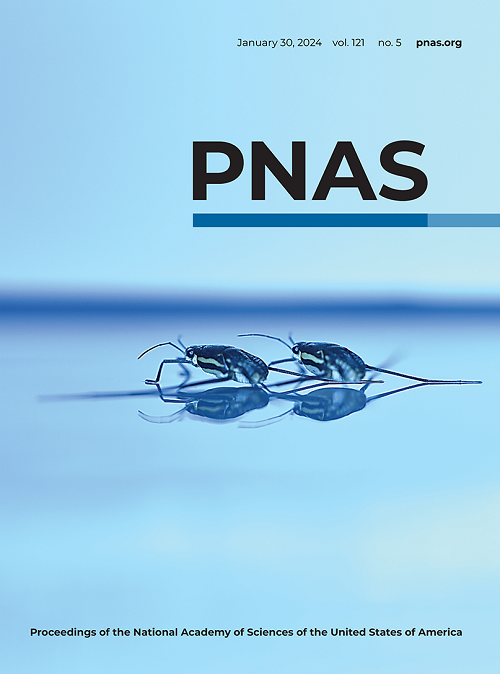动脉是精细调节的热传感器,调节肌张力和血流
IF 9.4
1区 综合性期刊
Q1 MULTIDISCIPLINARY SCIENCES
Proceedings of the National Academy of Sciences of the United States of America
Pub Date : 2025-05-20
DOI:10.1073/pnas.2503186122
引用次数: 0
摘要
为了应对不断变化的血压,动脉调节它们的直径来控制血液流动。这种重要的自我调节特性,称为血管肌张力,稳定下游毛细血管压力。在这里,我们揭示组织温度,结合腔内压力,关键决定肌张力。当温度系数(q10)为~11 ~ 20时,加热会急剧激活骨骼肌、肠道、大脑和皮肤动脉的张力。每一种组织都有不同的静息温度,我们发现动脉的热敏性被调整到这个温度,使肌张力对微小的热波动敏感。有趣的是,温度和腔内压力在很大程度上是独立感知的,而信号整合在一起触发肌张力。我们证明了热敏通道TRPV1和TRPM4介导具有离散温度敏感性的骨骼肌动脉的热致张力。同样,TRPM4也有助于肠道和脑动脉的热致张力。TRPV1和TRPM4分别在约31°C和33°C时产生半最大反应。已知组织温度的变化会改变血液流动性,从而改变血管导度;值得注意的是,热敏色调抵消了这种影响,从而保护毛细管完整性和流体平衡。综上所述,热敏性肌张力是调节组织灌注的基本稳态机制。本文章由计算机程序翻译,如有差异,请以英文原文为准。
Arteries are finely tuned thermosensors regulating myogenic tone and blood flow
In response to changing blood pressure, arteries adjust their caliber to control blood flow. This vital autoregulatory property, termed vascular myogenic tone, stabilizes downstream capillary pressure. Here, we reveal that tissue temperature, combined with intraluminal pressure, critically determines myogenic tone. Heating steeply activates tone in skeletal muscle, gut, brain, and skin arteries with temperature coefficients ( Q 10 ) of ~11 to 20. Each of these tissues has a distinct resting temperature, and we find that arterial thermosensitivity is tuned to this temperature, making myogenic tone sensitive to small thermal fluctuations. Interestingly, temperature and intraluminal pressure are sensed largely independently and the signals integrated to trigger myogenic tone. We demonstrate that thermosensitive channels TRPV1 and TRPM4 mediate heat-induced tone in skeletal muscle arteries with discrete temperature sensitivities. Similarly, TRPM4 contributes to heat-induced tone in gut and brain arteries. The half-maximal responses occur at approximately 31 °C for TRPV1 and 33 °C for TRPM4. Variations in tissue temperature are known to alter blood fluidity and therefore vascular conductance; remarkably, thermosensitive tone counterbalances this effect, thus protecting capillary integrity and fluid balance. In conclusion, thermosensitive myogenic tone is a fundamental homeostatic mechanism regulating tissue perfusion.
求助全文
通过发布文献求助,成功后即可免费获取论文全文。
去求助
来源期刊
CiteScore
19.00
自引率
0.90%
发文量
3575
审稿时长
2.5 months
期刊介绍:
The Proceedings of the National Academy of Sciences (PNAS), a peer-reviewed journal of the National Academy of Sciences (NAS), serves as an authoritative source for high-impact, original research across the biological, physical, and social sciences. With a global scope, the journal welcomes submissions from researchers worldwide, making it an inclusive platform for advancing scientific knowledge.

 求助内容:
求助内容: 应助结果提醒方式:
应助结果提醒方式:


